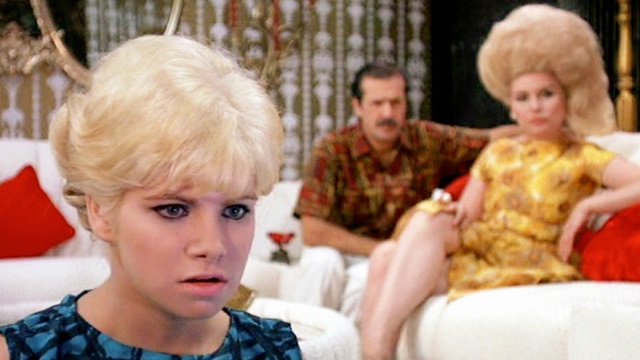When I was just a little Julius, I was obsessed with a movie I only half remembered. I remember watching Hairspray over summer break when I was like 8 or 9, and having no idea what I was watching. I didn’t have the cultural knowledge to process anything in the movie. I remember remembering moments. I remember there being an angry riot at an amusement park, but I didn’t know why. I remember there being a wig bomb, and a woman’s face being burnt. I remember the bizarre dance routines. I remember people dressed in funny ways, and a bizarre television show. But, I didn’t have any of the cultural knowledge to assemble the movie as a coherent whole. My parents thought the movie was silly and weird, and thought it was inappropriate for a very young developing Julius to obsess over something that was so overtly camp.
John Waters’ Hairspray is a masterclass in cultural dissection. Though a gateway movie to the weirdness of John Waters, Hairspray has more cultural savvy than the majority of his output. The foundation of Hairspray is a heightened look at bubblegum pop culture of the late 1950s/early 1960s as filtered through Hollywood’s juvenile delinquent movies. At first, Hairspray is a class struggle movie, pitting the impoverished and pleasantly plump Tracy Turnblad against the upper middle class, skinny queen of the show, Amber Von Tussle. But, this is a gearshift movie that becomes about race struggles as epitomized by the rise of Motown and the incoming of the civil rights movement.
What separates Hairspray from other movies about the advancement of civil rights is Waters’ use of camp to define and ridicule with a laser-like precision. The ultimate story of Hairspray is about integrating a local top-50 dance show, an idea that, by the 1980s, seems so innocuous that it becomes ridiculous. That’s Waters’ M.O. in Hairspray: not to make the people afraid of change into evil masterminds, but to ridicule them as ludicrous cultural gatekeepers. But they also fit in with the pop culture of the era: kooky graphic design, dances about squishing roaches and mashing potatoes, beatniks…
More than that, Hairspray was drawing parallels to the 1980s. MTV’s 1987 game show Remote Control possessed a graphic style borrowing as much from the day-glo nu-wave 1980s as it did from the 1950s; in turn, its set looked close to Hairspray‘s The Corny Collins Show. As Motown was invading pop music in 1962, Hip Hop and Rap were coming up in 1988. Waters highlights class struggles with how they relate to race relations. Amber Von Tussel has a multi-story house in a rich neighborhood, Tracy Turnblad has an apartment above a joke store in the city, and even she has to take a bus to an even poorer neighborhood to go to a record store dance run by Motor Mouth Maybelle.
In 96-minutes, Waters crams so much cultural shorthand, its no wonder an 8 year old was lost at sea in the 1980s. Though I had occasionally watched shows like Dennis the Menace or Leave It To Beaver, I had no cultural signposts to appreciate Hairspray. There were several cultural shifts between my existence and that of 1962 Baltimore. I hadn’t yet developed an appreciation of camp, nevertheless a cracked view of a culture I hadn’t yet been exposed to. And, in an attempt to normalize our existence, my parents were trying to cultivate an appreciation for mainstream American culture, as it then existed (think John Hughes). I think they were as confused as I was about why I would become fascinated with some weird movie I didn’t understand. And yet, it’s a masterpiece that would experience a cultural revival decades after its rather quiet release.
Hairspray streams on Netflix

